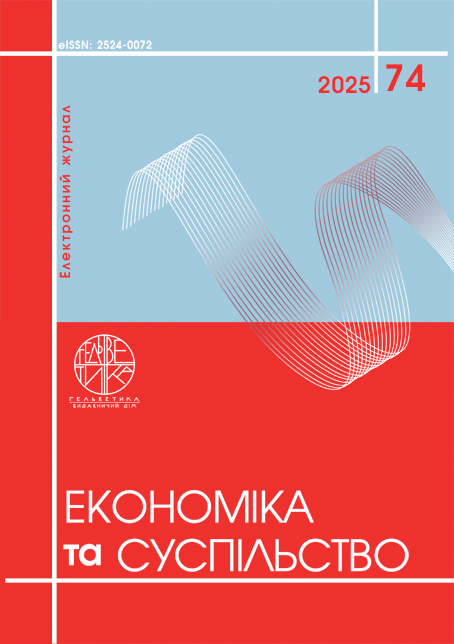АНАЛІЗ ПРОГРАМНИХ ПЛАТФОРМ ДЛЯ СТВОРЕННЯ ЦИФРОВИХ ДВІЙНИКІВ В ГАЛУЗЯХ ЕКОНОМІКИ
Анотація
Стаття присвячена аналізу програмного забезпечення для створення цифрових двійників—віртуальних моделей фізичних об'єктів чи процесів, що відіграють ключову роль у промисловості, енергетиці, транспорті тощо. Розглянуто проблеми відсутності єдиних стандартів, складності інтеграції різнорідних систем та обмежень масштабованості. На основі аналізу наукових публікацій (IEEE Xplore, ScienceDirect), технічних звітів (Gartner, IBM) та промислових кейсів (2020–2024) визначено основні технологічні підходи: фізично-орієнтовані, даноцентричні, гібридні та хмарно-периферійні моделі. Проведено порівняльний аналіз платформ (Siemens Digital Industries, Azure Digital Twins, PTC ThingWorx, Ansys Twin Builder) за критеріями функціональності, інтеграції, продуктивності, безпеки та вартості. Запропоновано методику зваженої оцінки, апробовану на прикладі енергетичного сектора.
Посилання
Digital Twins and Parallel Intelligence (DTPI), IEEE International Conference on URL: https://ieeexplore.ieee.org/xpl/conhome/10778636/proceeding (дата звернення: 29.04.2025).
Emerging Tech: Revenue Opportunity Projection of Simulation Digital Twins. URL: https://www.gartner.com/en/documents/5451563 (дата звернення: 29.04.2025).
Chen Y., Wang S. He, B., Duan P., Zhang B., Hong Z., and Ping Y., Crypt-analysis and improvement of DeepPAR: Privacy-preserving and asynchronous deep learning for industrial IoT. IEEE Internet Things J. 2022. №. 9(21). pp. 21958–21970.
Tao, F., Zhang, C., Qi, Q., Zhang, H. Digital twin maturity model. Computer Integrated Manufacturing Systems. 2022. №28. рр. 1267-1281.
Ismail M, Amal Abdel Gawad. Revisiting zero-trust security for internet of things. Sustainable Machine Intelligence Journal. 2023. №3(6). pp 1-8.
Adamenko Dmytro, Kunnen Steffen, Nagarajah Arun. Comparative analysis of platforms for designing a digital twin. Advances in Design, Simulation and Manufacturing III: Proceedings of the 3rd International Conference on Design, Simulation, Manufacturing (Kharkiv, June 9-12, 2020). Kharkiv: Springer International Publishing, 2020. pp. 3-12.
Jafari Mina, Abdollah Kavousi-Fard, et al. A review on digital twin technology in smart grid, transportation system and smart city: Challenges and future. IEEE Access. 2023. №11. pp. 17471-17484.
Wang Yuntao, et al. A survey on digital twins: Architecture, enabling technologies, security and privacy, and future prospects. IEEE Internet of Things Journal. 2023, №10(17). pp. 14965-14987.
Foundational Research Gaps and Future Directions for Digital Twins. URL: https://www.ncbi.nlm.nih.gov/books/NBK605512/ (дата звернення: 12.04.2025).
Kamran Iranshahi, Joshua Brun, Tim Arnold, Thomas Sergi, Ulf Christian Müller. Digital twins: Recent advances and future directions in engineering fields. Intelligent Systems with Applications. 2025. №26. URL: https://doi.org/10.1016/j.iswa.2025.200516 (дата звернення: 20.04.2025).
Muctadir, H.M., Manrique Negrin, D.A., Gunasekaran, R. et al. Current trends in digital twin development, maintenance, and operation: an interview study. Software and Systems Modeling. 2024. №23. pp. 1275–1305. URL: https://doi.org/10.1007/s10270-024-01167-z (дата звернення: 21.04.2025).
Digital Twins and Parallel Intelligence (DTPI), IEEE International Conference on. Available at: https://ieeexplore.ieee.org/xpl/conhome/ 10778636/proceeding (accessed April 29, 2025).
Emerging Tech: Revenue Opportunity Projection of Simulation Digital Twins. Available at: https://www.gartner.com/en/documents/5451563 (accessed April 29, 2025).
Chen Y., Wang S. He, B., Duan P., Zhang B., Hong Z., and Ping Y. (2022) Crypt-analysis and improvement of DeepPAR: Privacy-preserving and asynchronous deep learning for industrial IoT. IEEE Internet Things J. 2022. vol. 9(21), pp. 21958–21970.
Tao F., Zhang C.Y., Qi, Q.L. and Zhang H. (2022) Digital twin maturity model. Computer Integrated Manufacturing Systems, vol. 28, рр. 1267-1281.
Ismail M, Amal Abdel Gawad. (2023) Revisiting zero-trust security for internet of things. Sustainable Machine Intelligence Journal, vol. 3(6), pp 1-8.
Adamenko Dmytro, Kunnen Steffen, Nagarajah Arun. (2020) Comparative analysis of platforms for designing a digital twin. Advances in Design, Simulation and Manufacturing III: Proceedings of the 3rd International Conference on Design, Simulation, Manufacturing (Kharkiv, June 9-12, 2020). Kharkiv: Springer International Publishing, pp. 3-12.
Jafari Mina, Abdollah Kavousi-Fard, et al. (2023) A review on digital twin technology in smart grid, transportation system and smart city: Challenges and future. IEEE Access, vol. 11, pp. 17471-17484.
Wang Yuntao, et al. (2023) A survey on digital twins: Architecture, enabling technologies, security and privacy, and future prospects. IEEE Internet of Things Journal, vol. 10(17), pp. 14965-14987.
Foundational Research Gaps and Future Directions for Digital Twins. Available at: https://www.ncbi.nlm.nih.gov/books/NBK605512/ (accessed April 12, 2025).
Kamran Iranshahi, Joshua Brun, Tim Arnold, Thomas Sergi, Ulf Christian Müller. (2025) Digital twins: Recent advances and future directions in engineering fields. Intelligent Systems with Applications, vol. 26. Available at: https://doi.org/10.1016/j.iswa.2025.200516 (accessed April 20, 2025)
Muctadir, H.M., Manrique Negrin, D.A., Gunasekaran, R. et al. (2024) Current trends in digital twin development, maintenance, and operation: an interview study. Software and Systems Modeling, vol. 23, pp. 1275–1305. Available at: https://doi.org/10.1007/s10270-024-01167-z (accessed April 21, 2025).

Ця робота ліцензується відповідно до Creative Commons Attribution 4.0 International License.


